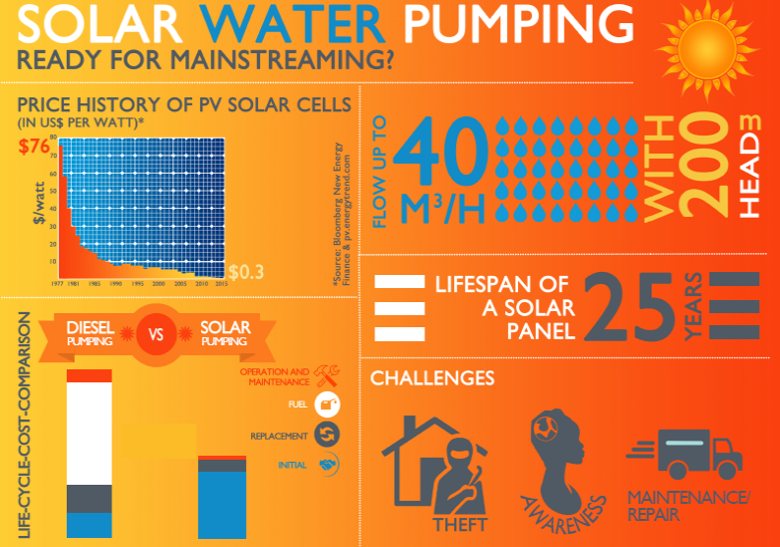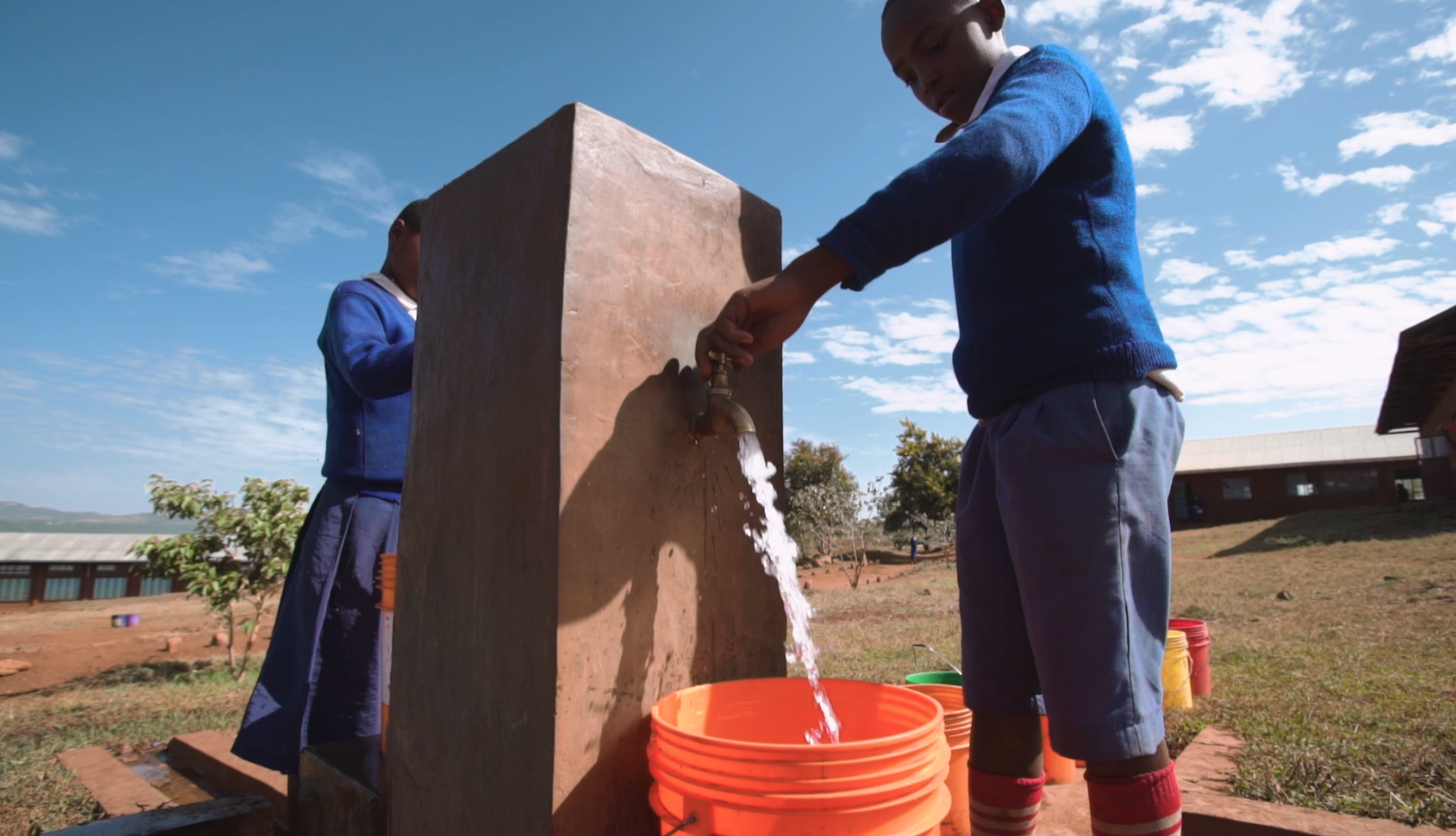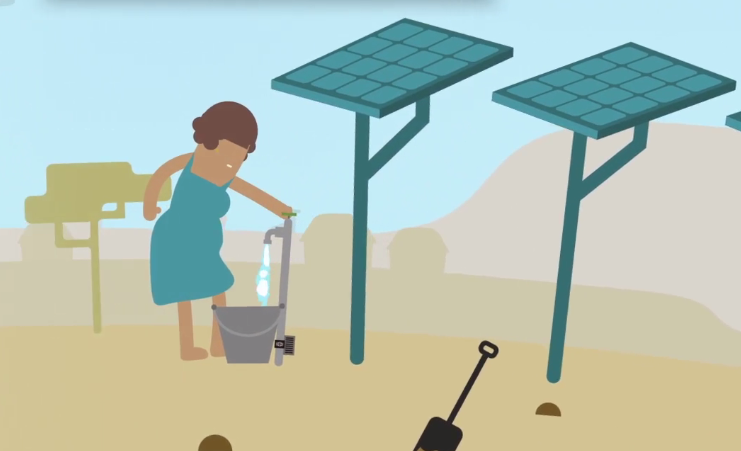Millions of people around the world live with limited access to water. In many communities, ground water is extracted through electric water pumps, which use diesel to fuel their systems. However, these systems not only require costly, regular servicing and the purchasing of fuel, they emit carbon dioxide polluting the atmosphere.
Solar Water Pumping, or photovoltaic water pumping (PVP), provides an alternative. After years of research and technological advances, it has proven to be operationally, financially, and environmentally sustainable. In recent years, the cost of solar technology has dropped tremendously. Prices for the solar panels used in these systems have dropped up to 80%. In addition, these panels last around 25 years, requiring little maintenance throughout this time.
These factors have made Solar Water Pumping an extremely viable way to expand energy access across developing countries and communities, while creating a strong resistance to shifts in rainfall caused by climate change or unreliable seasonable patterns. Some governments have opted to subsidize the cost of solar pumping, increasing the pool of shared learning for this emerging technology.
Even though solar water pumping is ready for mainstreaming and has started to take off in some parts of the world, its benefits remain largely unknown to communities, governments, and development institutions.
Last Updated: Jun 23, 2022





